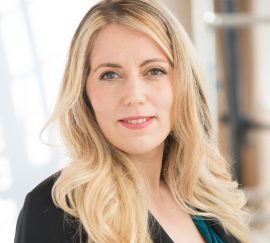A Closer Look At Creative AI

In today’s world, there is a lot of controversy surrounding using Artificial Intelligence (AI) as a medium to create artistic pieces of work, from the argument that AI will replace artists to the questions of legality surrounding who owns the rights to the pieces created. I sat with Assistant Professor Maya Ackerman (Computer Science and Engineering) to learn more about creative AI and its implications for the future of the creative industry. Her article “The real opportunity in creative AI: Deepening human creativity” gives us her thoughts and optimism for the future. Check out her article; it's a great read!
JD: Please briefly explain creative AI to those who may not be familiar with the technology.
MA: Computational Creativity looks at a computer as more than a tool, but rather as a creative entity or a creative partner for humans. The related field of Creative AI focuses on the technical aspects of eliciting creative behavior in machines. Since the 1950s, researchers have been exploring how machines can do creative things. Giving machines abilities to create art such as music, dance, and paintings, to name a few. David Cope, an early innovator, experimented with musical intelligence and developed the software Experiments in Musical Intelligence (EMI).
JD: You mentioned in your article that you are a creative person and how it inspired your passion for creative AI. What creative process do you believe could benefit the most from the advancement of Creative AI?
MA: AI has already penetrated visual art. Music is another clear candidate because it will transform how people write songs. Because it’s commercially lucrative, there's a lot of effort to help marketers with the aid of companies such as CopyAI. Those are the main ones where there is more research to leverage. Some of the more niche applications, for example, pottery–which I think is really cool–just have not had as much effort go into figuring out how to involve machines. So the most dominant or common ones will probably benefit earlier.
JD: In your opinion, do you believe that the benefits of creative AI outweigh any potentially undesirable consequences?
MA: There is profound potential to elevate human creativity to new heights. We’re starting to see that today with DALL-E and Midjourney, as well as efforts in the music space. The acoustic piano used to be controversial, the idea of buying brushes and paints was once new, and now we take these for granted - they are basic building blocks for creativity. It will soon enough be the same with creative AI. So I am an optimist. Unfortunately, like any other innovation, it can also cause some damage if introduced to the world carelessly. I'd love to see companies and researchers, especially those making creative AI technology much more accessible, take these issues more seriously.
JD: Once Creative AI becomes more mainstream, how easy will it be accessible to the masses?
MA: It's remarkably accessible already. A great example is Craiyon (formerly known as DALL-E mini), a free visual art software, and the system LyricsStudio, which is very affordable. I think that's the way to go. I believe that these systems have to be affordable. I don't want this to be another thing that differentiates the haves from the have-nots. Ultimately, I don't know if there's going to be a free version of everything or if the free stuff will be the best, but I hope that the best systems will remain affordable.
JD: What projects or creative pieces do you plan on working on using the technology?
MA: I have many projects we’re working on in my lab; one is bringing philosophy into the space with my students Aanchal Rai ’22 and Abhilash Srivathsa ’22. My Ph.D. student Juliana Shihadeh is working on a project related to creating visuals for live orchestras so people with auditory impairments can better enjoy the live experience. I’m also working with a couple of other students, Raya Young and Sukhjot Bassi, on an interior design project that helps people do interior design with an automated system, so there are plenty of projects!